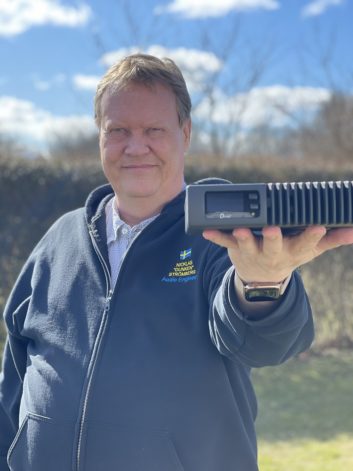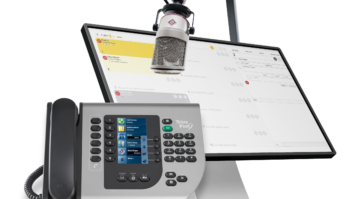 The author is sound technician for Nicklas Strömberg Produktion AB.
The author is sound technician for Nicklas Strömberg Produktion AB.
TRELLEBORG, Sweden — The last bit of the sound chain has sometimes been the most awkward.
Long distances, humming copper wires, external interference, heavy rain, lightning and hard-to-reach towers can be challenging. Not to mention the expensive sound processors that have to be placed at the transmitter out in the woods or up on the mountain!
Now, with the technology that transmits a complete MPX signal from the studio-side audio processor to the transmitter, it has become so much easier.
In a recent project for a customer, we replaced seven AoIP codecs, seven sound processors and seven RDS encoders with a single Omnia.9 processor and seven Omnia MPX Nodes.
Having the Omnia.9 in-studio also means that the customer’s Livewire production environment now delivers a completely unbroken digital audio chain from playout server to transmitter, and each transmitter gets fed the same great Omnia.9 sound.
The connections from the studio to the seven sites are of different classes. Point-to-point fiber, radio link and internet via ADSL. Since the MPX Node only requires a 320 kbps data stream, there are no problems with buffering. In an emergency, 4G mobile data also works well, but there can be problems with that, for example, longer latency.
It came as an unpleasant surprise to another client when their old internet-connected AoIP equipment was hacked and destroyed, with dead air as a result. Luckily they already had an Omnia.9 in the studio.
When they called me for help, I quickly ordered an Omnia Audio µMPX FM composite license for their Omnia.9 (basically turning it into an STL), and took my spare MPX Node to their transmitter. Only a short while later, they were on air again, and now they no longer have to worry about data intrusion because the MPX node has a built-in secure firewall.
There are several methods of implementation. In some cases, the customer already has an audio processor but it does not support µMPX. The Omnia MPX Node is also available as an encoder providing an easy end-to-end connection by simply adding two to the workflow. The MPX node encoder can even send redundant streams to multiple MPX Node decoders for multiple transmitter sites.
The easiest implementation is if the sound processor is an Omnia.9, which has the secure µMPX function built in. It can send up to 16 simultaneous streams (or more on a private network that permits multicast), so if it is a large station with 16 transmitters, it can save a lot of money as the air chain no longer needs expensive sound processors at each transmitter. One Omnia.9 in the studio and 16 MPX Nodes is enough. This reduction in technology investment means there will be more money left over for content and staff.
Radio World User Reports are testimonial articles intended to help readers understand why a colleague chose a particular product to solve a technical situation.
For information contact Cam Eicher at The Telos Alliance in Ohio at 1-216-241-7225 or visit www.telosalliance.com.







